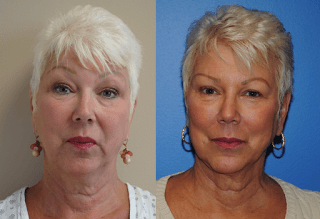Q: What is commonly involved in a blepharoplasty procedure?
A: Anesthesia: Upper Blepharoplasty procedures are commonly performed under general anesthesia. I find that patients are often most comfortable under general anesthesia during an eyelid surgery.
The Incision: Incisions are made in pre-existing eyelid creases. Occasionally, if the creases are at different heights, then creases are set to a level close to approximating each other. The incision is then typically closed with sutures, skin adhesives or surgical tape.
After Surgery: Some swelling or bruising may occur, but will subside. The result will be a refreshed, younger looking you.
Q: What is the recovery time for upper blepharoplasty?
A: I typically tell patients that if surgery is done on Friday, they are fine going back to work on Monday…meaning e-mails, cell phone, phone conference meetings, or paperwork. Typically, I prefer if patients wait for a full two weeks before performing any heavy lifting or straining.
Patients are instructed to sleep with the head of their bed elevated for 48 hours to reduce swelling. Bruising can occur and can be visible for anywhere from 3 days to 3 weeks.
There is usually one suture placed on each eyelid that is removed at approximately 5 days following surgery.
All patients are given pain pills such as Percocet or Vicodin. Typically, patients do not complain of any pain following upper eyelid surgery and can easily convert to Tylenol or Motrin within a day or two.


